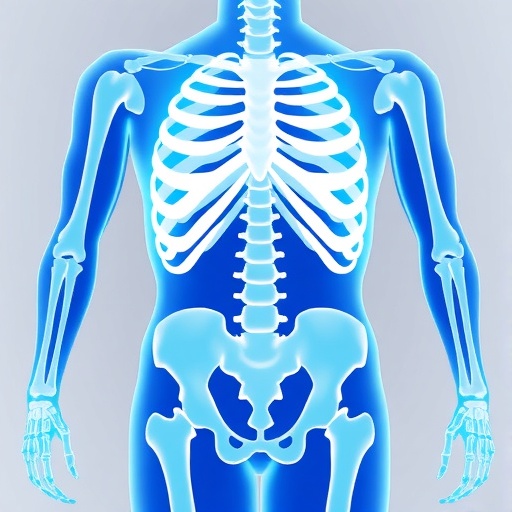CHICAGO — Northwestern Medicine scientists have discovered that a subset of immune cells called nonclassical monocytes (NCMs), previously unknown to reside in the lungs, play a key role in driving primary graft dysfunction (PGD), the leading cause of death after lung transplantation.
The study, published June 14 in Science Translational Medicine, also demonstrates targeting these cells could lead to novel treatments for PGD, a complication that currently impacts more than half of transplant patients.
Dr. Ankit Bharat, an assistant professor of surgery at Northwestern University Feinberg School of Medicine and a Northwestern Medicine physician, was the principal investigator of the study.
"This is a widespread, lethal problem and the biggest reason why lung transplant patients experience both early death and long-term problems. So, if you can fix PGD, you can really fix a lot about transplantation," Bharat said. "Now we know what causes it, and we can develop a treatment for it."
PGD is a severe form of lung injury that develops when the recipient's neutrophils — white blood cells — are recruited into the transplanted lung, initiating the inflammatory cascade and causing tissue damage. While it has been understood that neutrophils were the main effector cells seen in PGD, the mechanisms that drive their influx into the lung were unknown. Further, targeting the patient's neutrophils was not considered to be a practical strategy for treatment, given that those same cells are critical for defending the body against pathogens.
In the current study, the scientists demonstrated that NCMs hidden in the donor lung are the culprit ultimately responsible for initiating the damaging inflow of neutrophils following transplantation of that lung.
Previously, it had been thought that all donor immune cells are eradicated when the lungs are flushed with a solution prior to transplantation. But the scientists discovered that NCMs — a type of immune cell whose structure and function have only recently been described — are actually retained in the blood vessels of the donor lung.
After identifying these cells in the lungs for the first time, the scientists further demonstrated their fundamental role in developing PGD: NCMs activate a pathway that produces a protein called CXCL2, which acts to attract the damaging neutrophils into the lung.
The findings suggest that targeting NCMs in the donor lungs could potentially prevent the development of PGD.
"This is a clinically-relevant finding because it would likely be easy to develop a drug that kills these cells at the time of transplant," said Bharat, also a member of the Robert H. Lurie Comprehensive Cancer Center of Northwestern University. "That's a big strength of our findings: because these are donor-derived cells, you could administer those drugs to the donor lungs before transplant and prevent any potential side effects to the recipient."
The NCMs also don't seem to play a role in a recipient's ability to fight infection, the scientists found, indicating that the cells could be eradicated without weakening the immune system.
The scientists now plan to investigate developing a drug that would eliminate NCMs during transplantation. Similar therapies have already been demonstrated in their animal models.
Separately, the research also seems to suggest that these monocytes may play a broader role in other forms of lung injury beyond transplantation, including acute respiratory distress syndrome. Those findings are forthcoming in future publications.
Bharat was initially driven to investigate primary graft dysfunction after a lung transplant patient of his developed the syndrome.
"We truly believe here that if a patient develops an unsolvable problem, it should be our commitment and duty to do everything we can to take that problem to our scientific laboratories, find a cure, and then bring it back to patients," Bharat said. "Hence, while we ensure that the patients receive the best technical expertise in the field of lung transplantation — we also want to advance the field by finding cures for such lethal problems to really make a difference in patient outcomes."
Bharat and his collaborators followed a similar path two years ago when they identified the mechanism behind hyperammonemia syndrome, a fatal disorder which affects five percent of lung transplant recipients, after it affected one of their patients. The findings, also published in Science Translational Medicine, eventually led to a treatment for a deadly syndrome that had plagued the field of lung transplantation since its inception.
"For several years since it was first identified, recipients have been dying of hyperammonemia. And now with this discovery, everyone can be effectively treated," Bharat said. "I hope that, similarly, with primary graft dysfunction we can now develop a treatment for this lethal problem."
Dr. Zhikun Zheng, a former research fellow, and Dr. Stephen Chiu, a postdoctoral fellow in the Bharat laboratory, were the first authors of the study.
The scientists demonstrated the findings using a number of sophisticated methods, including a mouse transplant model with live high-resolution single cell imaging, immunoelectron microscopy, and transcriptomic profiling using RNA-sequencing.
###
The paper was also co-authored by Dr. Scott Budinger, Harris Perlman, Dr. Alexander Misharin, Farida Korobova and others.
Bharat, Budinger, Perlman and Misharin are also members of the Robert H. Lurie Comprehensive Cancer Center of Northwestern University.
The study was supported by National Institutes of Health (NIH) T32 DK077662 (Transplant Scientist Training Program and American Society for Transplant Surgery Resident Research Scholarship), NIH P01 AG049665, NIH P01 HL071643 (Department of the Army PR141319), and NIH HL125940 (Thoracic Surgery Foundation, American Lung Association and Society of University Surgeons.
More News at Northwestern Now
Media Contact
Marla Paul
[email protected]
@northwesternu
http://www.northwestern.edu
############
Story Source: Materials provided by Scienmag




